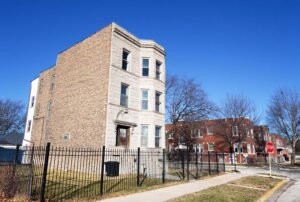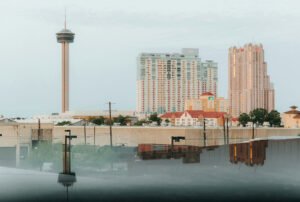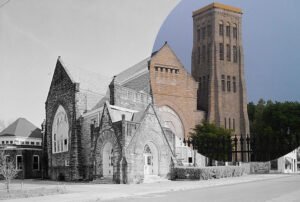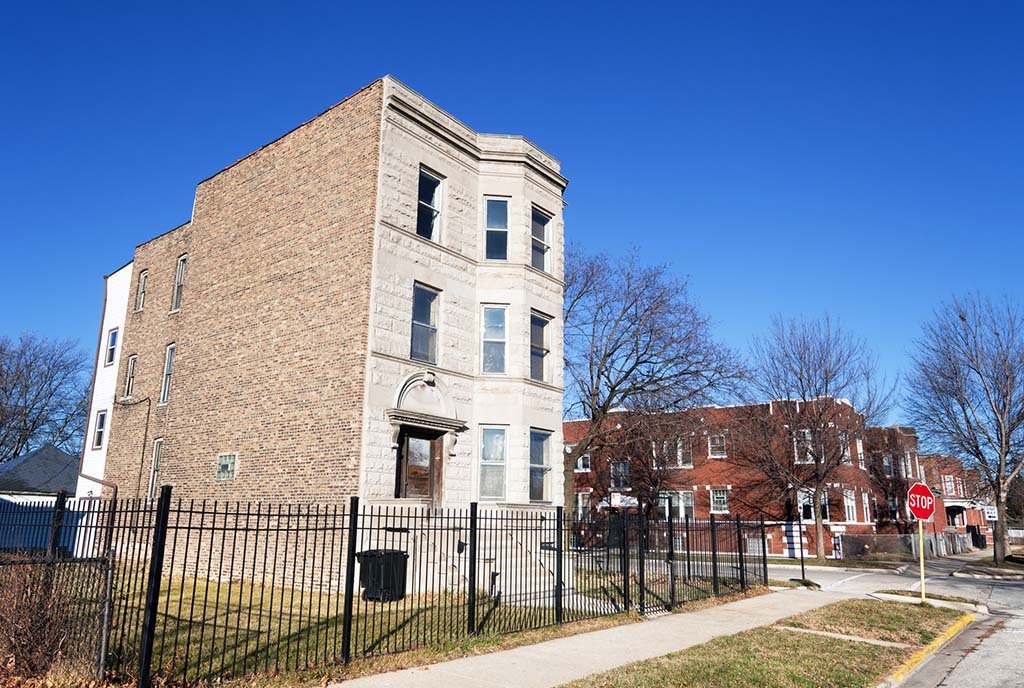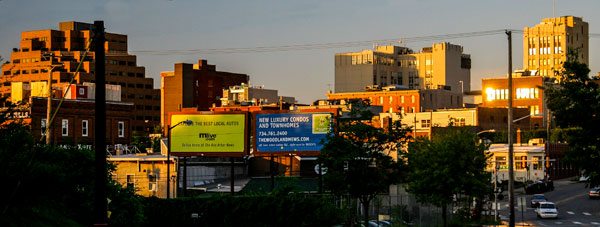
May 15, 2018; Next City
One might wish to contrast what is occurring here with the organizing methods the Obama Foundation is using in Chicago.
Over the past four years, Flint, Michigan has gained national media attention for the town’s water crisis, and more recently for a high-profile trial that features public employees and their role in the water crisis. However, the story of Flint is much more than failed infrastructure, as its well documented economic decline is an illustration of how disinvestment produces a wide spectrum of social, health, and economic issues. For many communities struggling with similar issues, Flint’s recent community-led development is both inspiring and a framework for mobilizing assets, building social capital, and collaboratively paving an authentic path forward from the ground up, even in the face of seemingly insurmountable obstacles. This is exemplified by the work of the University Avenue Corridor Coalition (UACC), a collaborative of 70 groups and organizations working together to restore and revitalize University Avenue, which spans the city’s Carriage Town and central neighborhoods.
These efforts need some context. Due in large part to the stable manufacturing economy established by General Motors, Flint’s population peaked in the 1970s at nearly 200,000 people. As late as 1980, Flint’s median income was higher than San Francisco’s, and Flint had the nation’s highest median wage for people under 35. Like many Rust Belt cities, however, as manufacturing jobs left and companies abandoned communities, Flint’s economy faltered, causing a job vacuum, and resulting in hundreds of businesses closed, millions of lost public revenue, and a steady population decline to its current level of 98,000. These precipitous drops spurred an entrenched economic downturn has led to Flint being named as the nation’s poorest city according to the US Census estimates released last September, with poverty rate of 41.9 percent, along with consistently high rates of chronic disease. For example, Genesee County, which Flint is the county seat, ranks 82nd out of 83 counties in Michigan in terms of health outcomes according to County Health Rankings.
Yet, despite the stark transition from being a regional economic center to a rebuilding one, recent efforts to invest in the city’s economic development have come from a broad array of groups, including a recent $3 million, four-year grant from the W.K. Kellogg Foundation to the city to establish an economic development team. In addition to more formal economic development investments such as this, a major part of the story in Flint is the emergence of community level development that has produced some very positive results.
Dating back to a workshop on Crime Prevention through Environmental Design (CPTED) in 2012 hosted by Kettering University, UACC has mobilized the community by using CPTED principles, along with a blend of asset-based community development (ABCD), placemaking and “busy streets” strategies that have facilitated the development of several unique events and activities that, along with a crime prevention focus, have led to a dynamic community-led revitalization force in the area. Through a combination of community organizing as well as coordinated investments at the community level, Flint is now emerging has the newest example of a burgeoning community development movement that is occurring at the grassroots level across the country. These efforts are organized by collaboratives, coalitions, networks, and community groups all of which focus on cultivating community assets rather than emphasizing deficits, thereby reclaiming their neighborhoods and filling in gaps where traditional community and economic development efforts have failed.
For UACC, one of the most fundamental pieces has been strengthening and creating resilient community networks by weaving connections, creating opportunities for sharing and learning, and increasing social capital within the neighborhood. The strategy for the UACC is summarized through a flowchart that features roles, responsibilities and the process that the collaborative uses. One of the striking things about the overall strategy is the role that co-chairs play. Two central responsibilities of the co-chairs are to listen and to connect, while maintaining the communications list and ensuring that information is flowing openly. The act of connecting through listening is powerful, UACC has been successfully able to galvanize community support for dozens of projects while growing the coalition exponentially.
Sign up for our free newsletters
Subscribe to NPQ's newsletters to have our top stories delivered directly to your inbox.
By signing up, you agree to our privacy policy and terms of use, and to receive messages from NPQ and our partners.
Part of the growth and success of the coalition is due to its structured approach to organizing. UACC identified six overarching “critical opportunities” that they see as their main organizing areas, which are broad and definitely worth noting. They include: 1) addressing blight and crime hotspots, 2) improving community health, 3) stabilizing land use for economic and neighborhood development, 4) establishing leisure and recreational areas, 5) creating and enhancing communication links, and 6) creating and enhancing educational opportunities in the area.
UACC has also functioned as network, both by attracting several investments, and mobilizing the community in many innovative ways. The collaborative has initiated and supported several community events and festivals including Service Saturdays, Flint Public Art Project events, and a car show, to name a few. In addition, UACC efforts have contributed to the development of learning and demonstration gardens, community development working groups, establishing a local grocer, and multiple place making activities.
By infusing community into its approach, UACC successfully leveraging the power of the collaborative to harness resources and apply those to the larger vision of revitalization. Individual groups that are part of UACC such as Kettering University have received grants to increase street activity along the corridor, including a three-year, $150,000 in partnership with the University of Michigan, which enabled several community infrastructure projects to be developed including building a disc golf course, planning neighborhood block parties, discussing placemaking, and providing 300 LED Solar Motion Lighting and 99 driveway motion sensors. Larger scale projects include a $1 million grant from the Department of Justice to support UACC’s efforts.
In addition to attracting funding, its flexible structure allows UACC member groups to take issues head on. Regarding public safety, which is a major concern given that Flint ranks ninth in the nation in violent crime according to the FBI, groups such as University of Michigan-Flint and others have supported research into sustainable development activities in part by mapping crime hotspots for the larger group to focus on. Similarly, UACC member Factory Two has partnered partnership with US Ignite’s Smart Gigabit Communities Program and the Flint Police Department on the Flint Smart City Initiative. As part of this effort, Factory Two is hosting a reverse pitch competition on public safety to source ideas from the community and entrepreneurs.
UACC’s results have been impressive. Recently, they released a five-year community report documenting their efforts and processes, capturing the essence of the power of community networks towards solving intractable problems. Since 2012, the community UACC focuses on has experienced 1) a 78 percent decreased in poor, substandard, and blighted properties, 2) a 54 percent decrease in assaults, 3) an 83 percent decrease in robberies, and 4) has catalyzed investment. According to the report, $35 million has been invested in development, improvement, education, recreation, and health, spurred by a 250 percent increase in UACC attendance and participation.
By working together and recognizing the collective assets of the collaborative, UACC as a network of nonprofits, businesses, and public and private partners offers a tremendously insightful look at how community-led development efforts have the power to transform the face of communities, reverse entrenched patterns, and provide hope by being inclusive and listening to what the community needs.—Derrick Rhayn


